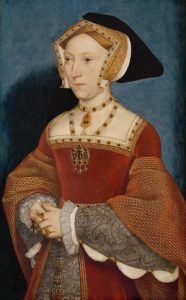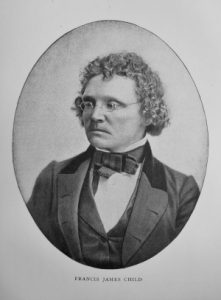Henry VIII married six times and his second wife, Anne Boleyn, miscarried three sons and fell out of favour with the king. Henry began courting Jane Seymour and, in order to marry her, he had to find reasons to end his marriage to Anne. He had Anne investigated for high treason and she was eventually beheaded based on fabricated charges of adultery, incest and plotting to kill the king. Henry was then betrothed to Jane the day after Anne Boleyn’s execution.
Queen Jane’s brief but significant reign led to the birth of a male heir, Edward VI, under very arduous circumstances. The English ballad “The Death of Queen Jane” is about the death of Jane Seymour following the birth of Prince Edward. Most versions of the song end with the contrast between the joy of the birth of the Prince and the grief of the death of the Queen. No direct evidence documents exactly how Jane Seymour gave birth but the popular view of a birth by cesarean section is unlikely, though ubiquitous in the versions of the song. Medical science at that time was not capable of such an operation. Cutting open a mother generally only happened when the mother died whilst labouring, in a desperate hope of saving the child. It is historically believed that Prince Edward was born naturally, and that his mother succumbed to an infection and died 12 days later.
The song “The Death of Queen Jane” survives to this day in great part to the work of Francis James Child (1825 – 1896). Child was an American scholar, educator, and folklorist, best known for his collection of English and Scottish ballads now known as the Child Ballads. “The Death of Queen Jane” is Child Ballad 170. The earliest record of the song seems to be a publication called The Lamentation of Queen Jane, licensed in 1560.
In the Harvard library, Child accumulated one of the largest folklore collections in existence, studied manuscript rather than printed versions of old ballads, and investigated songs and stories in other languages that were related to the English and Scottish ballads. His final collection was published as The English and Scottish Popular Ballads which contained 305 ballads. The melodies to most of the ballads were collected and published by Bertrand Harris Bronson (1902-1986), professor in the English department at the University of California, Berkeley, in and around the 1960s.
Richard Séguin – voice, acoustic guitar, mandolin
To hear the piece, click on the title below.
The Death of Queen Jane



Ajouter un mot
You must be logged in to post a comment.